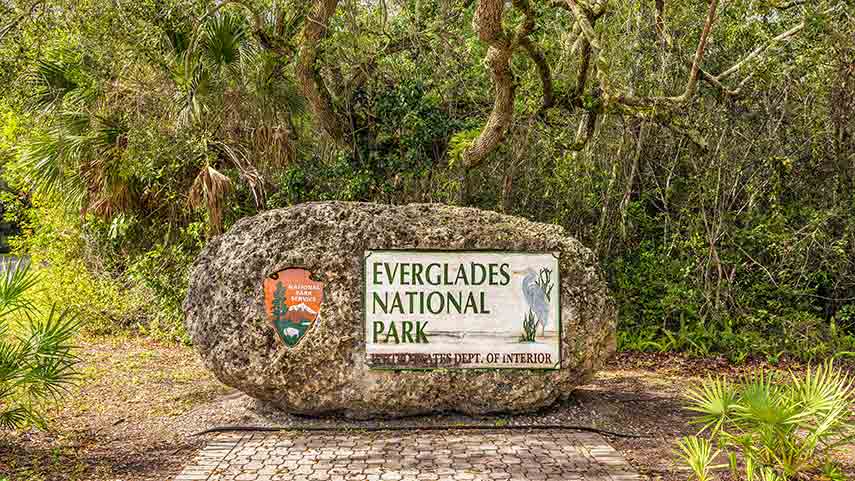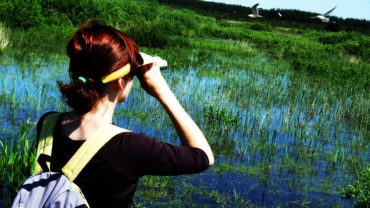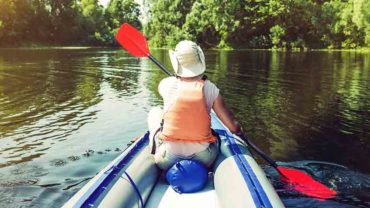Ever wondered what makes the Everglades National Park in Florida so famous? We put together a list of facts about the Everglades that will help you understand why the park is marked as the World Heritage Site by UN.
Top 10 facts about the Everglades:
The Everglades National park is not just another park, but it has a number of reasons to be called one of the top tourist attractions in Florida. Here are our picks for the top 10 facts about the Everglades National Park:
1. The size of the park:
The world ‘largest’ is used with the Everglades National park for a number of reasons. The region is ranked as the largest wetland ecosystem (subtropical) in the North America region. The largest ecosystem (mangrove) in western side and it is also the largest wilderness that you can find in the Southeast region. The park is also known to contain the largest stand in the North America for the sawgrass prairie which also is the most critical breeding ground in the entire continent for the tropical type wading birds. If we talk about the covered area of the park then originally, it used to occupy 11,000 sq. miles of land. The covered area of the designated park now spans as much as 1.5 million acres, which definitely is a jaw-dropping number for a park.
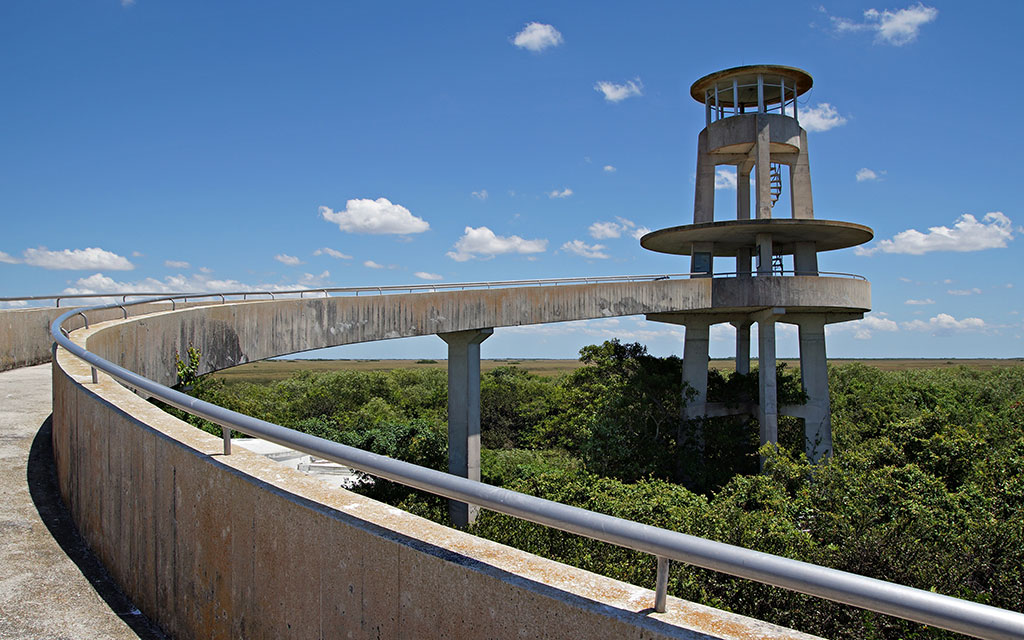
Observation Tower at Shark Valley in the Florida Everglades
2. It is actually a river:
Unbelievable but true, that the Everglades National Park is actually a long river which constantly moves from North to the South side, with water coming from the Okeechobee Lake. It eventually forms a 60 mile wide slow moving river with a length of 100 miles. However, according to the historians of the park and the region, the length of the River of Grass now is much smaller than it used to be in the years in the past. It is believed that nearly 50 percent of the wetland habitat is now completely wiped out due to the nearby construction and the unavoidable drainage projects.
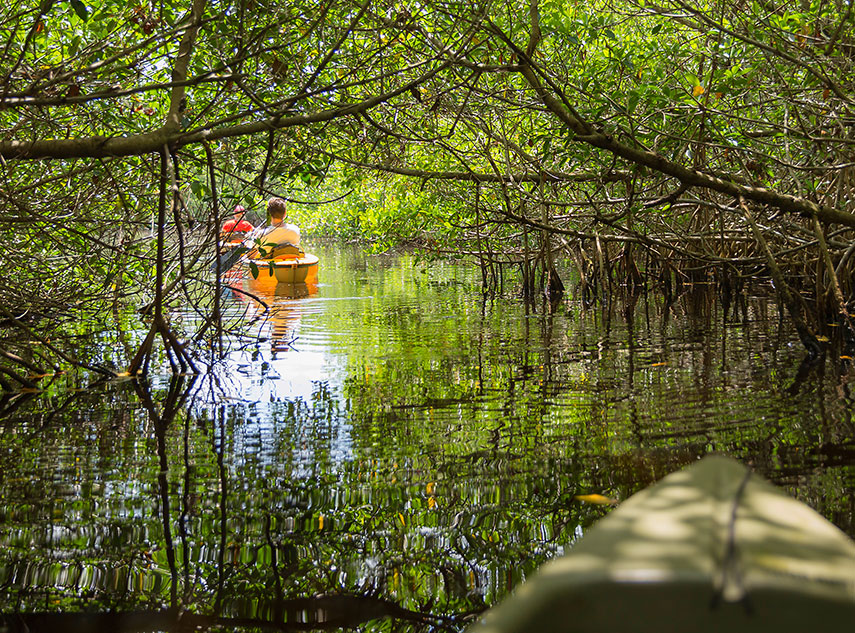
Kayaking in Mangrove Tunnels in Everglades National Park
3. Crocodiles and alligators coexist:
Yes! You read that absolutely right. This is the only place in the world where the crocodiles and the alligators can be found in the same place. The coastal area of the Everglades is known to be the home for the crocodiles while the alligators can be found by the freshwater, inland. The park nevertheless, provides both these species with the perfect and natural habitat where they can easily coexist, totally in the wild.
4. Home to 16 endangered species:
The Park without a doubt is complex to understand but that actually is the Unique Selling Point of the park as well which attracts numerous visitors every year. The crocodile and the panther are the only 2 types of endangered species protected well by the Everglades ecosystem. Having 9 different habitats within the park, 16 distinct species of birds, reptiles, numerous mammals, and plants are to be found here as well. It provides the adventurous families, nature enthusiasts, shutterbugs or a bunch of friends with an excellent learning experience about distinct habitats for endangered and wild species.
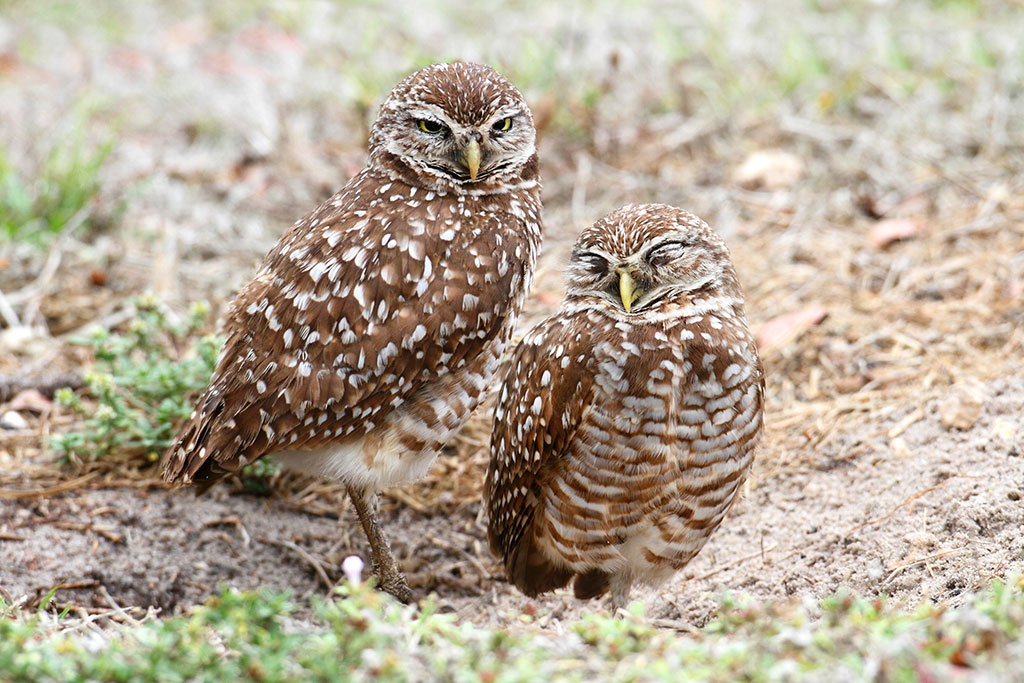
Burrowing owls by a nest hole in the Florida Everglades. The burrowing owl is endangered in Canada, threatened in Mexico, and a species of special concern in Florida and most of the western USA.
5. Around 7 million people use water for drinking needs:
A tourist spot, yet the health of the park is a big deal for a very special reason. The reason is that million Floridians rely on the clean flowing water at the Everglades for fulfilling their drinking needs. This also is a bit of a concern as millions of tourist visiting the park every year carries a risk of making the water contaminated. However, the authorities at the park are doing a great job in order to keep it clean from any possible contamination.
6. Fire at the Everglades is important and common:
The first thought about the Everglades National Park is that of a wetland with murky waters all around. This is true for the majority of the year, but there is also a time with a dry season when the weather situation leads to some drought like setting which is ideal for fire. Many people are not aware of the concept that fire is pivotal for maintenance purposes and for paving the way for a complex ecosystem to survive.
7. Land of Oil in the Past:
Yes, it is a fact that the Humble Oil Company did found oil in the vicinity of the Park, back in the year 1946. However, the oil quality and then the technological incapability didn’t make it viable for the company to invest on extracting oil. The area was originally owned by the Humble Oil Company, which is now known as Exxon, gave the area to the government due to the poor quality of oil found and the other technical reasons. Therefore, the government, later on, turned this area to become part of the great Everglades National Park.
8. Airboats in the Park:
The airboats in the Everglades is the most iconic form of transportation that you could ever see in a park or elsewhere. An airboat is actually a very shallow-draft vessel, having a large size propeller at the back that utilizes the air for propelling the boat. A number of old Floridians claims that they actually have invented a middle thing between a boat and an airplane. However, the airboat is known to be perfected in the year 1905.
9. Nutrient Pollution:
The nutrient pollution is known to source the algae blooms which actually become responsible for taking away the oxygen from the water, thus resulting in the suffocation of the natural fauna and flora. It is estimated that nearly 25% of the Everglades natural beauty has been damaged due to this nutrient pollution.
10. Dropping water levels:
The water in the Okeechobee Lake dropped from 22 to 15 feet in the year 1913, above sea level. This was done for providing flood control. However, these low maintenance level of the lake took away the honor for the Everglades to be the largest place for storing water at one place.
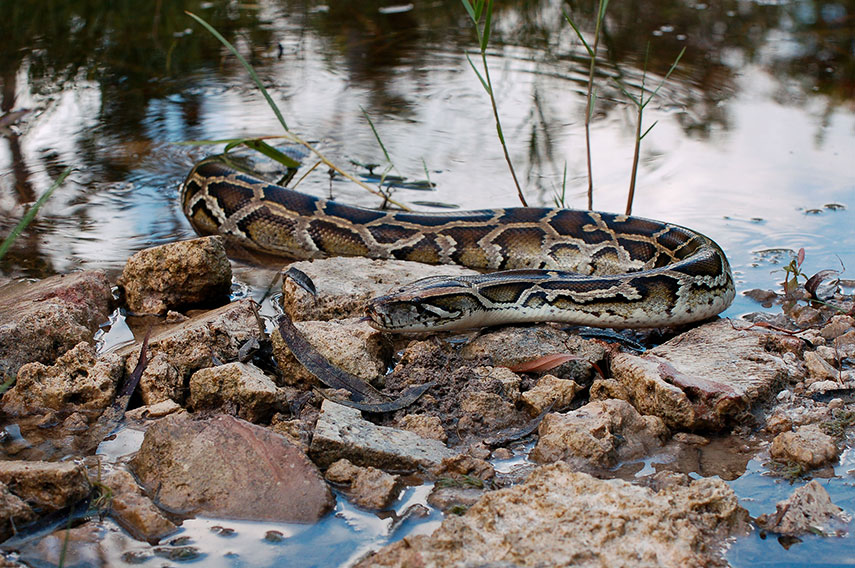
Burmese Python in the Everglades
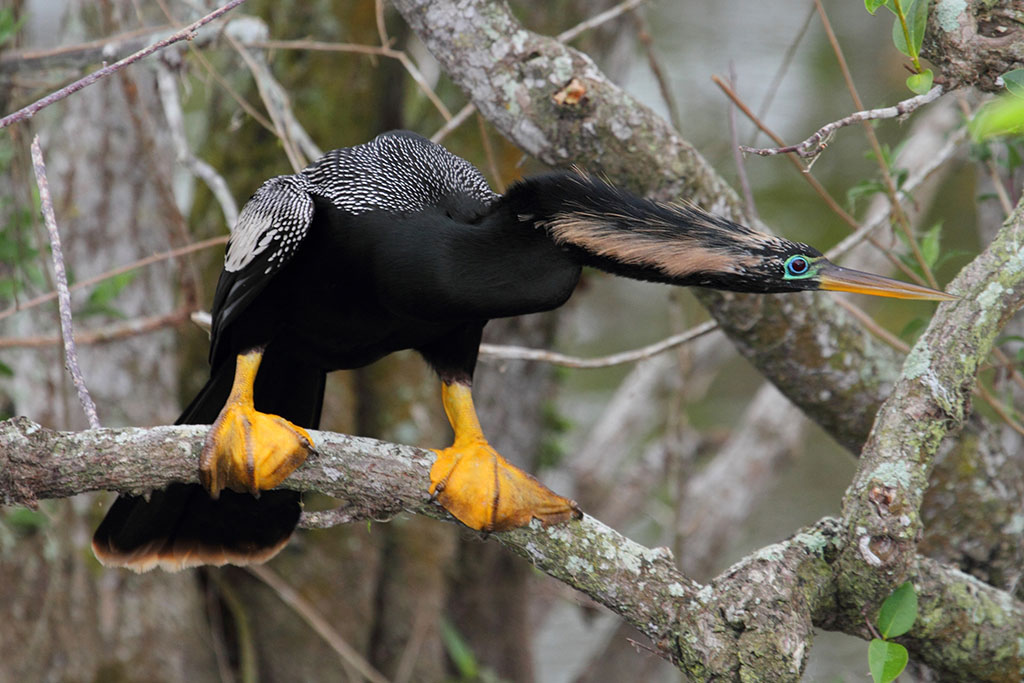
Male Anhinga on a perch in the Florida Everglades
Conclusion:
Everglades National Park makes the top most combination of habitats which collectively makes the most awe-inspiring ecosystem. The park is known for its biosphere reserve and enabling visitors to see the top most endangered species of the world. The miles-long trails are scenic and give you outstanding opportunities for some memorable photographs and movie-making.
So, don’t forget to bring your camera!

